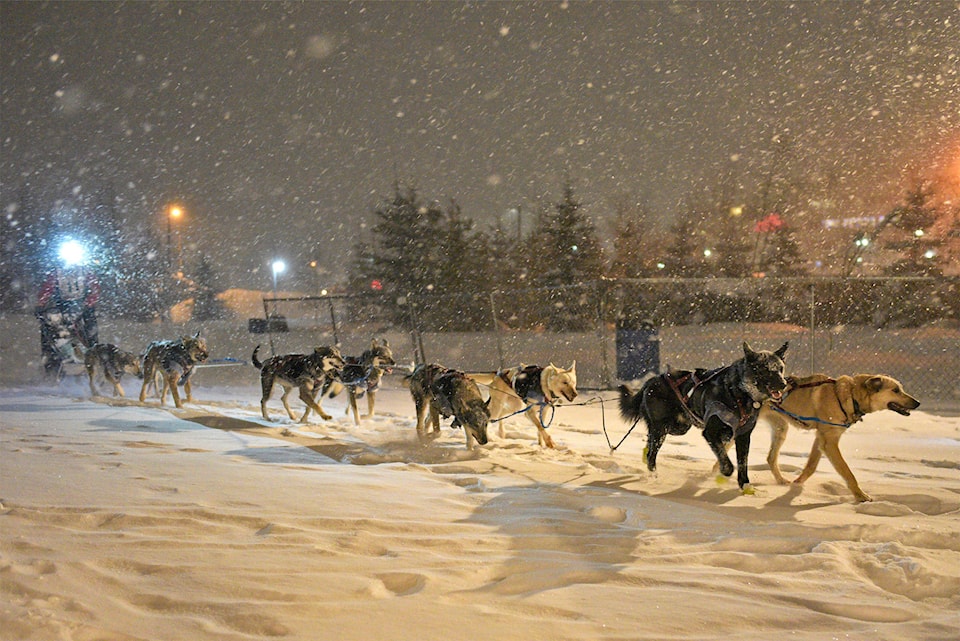The only thing you can count on in the Yukon Quest with respect to weather and the trail is change.
That was the message from Sgt. John Mitchell of the Canadian Rangers back on Jan. 31 in Whitehorse before the 1,000-mile (1,600-kilometre) race to Fairbanks, Alaska, even started.
Conditions were cold at the start of the race — dropping below -40 C at the Braeburn checkpoint — but slowly warmed as the race continued, reaching the neighbourhood of -20 C by the time racers reached Dawson and warming up to between -10 C and -5 C by the time the leaders began to finish the race.
There was little to no snowfall during the Yukon portion of the race, but heavy snowfall started in Fairbanks as finishers approached and, unsurprisingly, Eagle Summit has had stretches of bad weather.
Whitehorse’s Hans Gatt said the start of the race was not what he had hoped for as far as temperature.
“First of all, it was cold at the beginning and I can’t deal with the cold very well anymore,” the longtime musher said. “That wasn’t any fun.”
During the Alaskan half of the race, drifting snow and high winds meant a number of the frontrunners’ dog trucks had to wait out the evening of Feb. 8 stuck near Eagle Summit on the Steese Highway, the only road in and out. They worked together early the next morning to shovel out and reach Circle, Alaska, in time for mushers en route from Eagle, Alaska.
Although clear skies and warm temperatures allowed the first group of mushers through, further back in the pack teams were forced to either climb Eagle Summit in near white-out conditions or turn back to wait for the storm to break.
“Wow, I didn’t get caught in a storm up here for once,” said third-place finisher Allen Moore at the finish about Eagle Summit. “But I knew someone probably would.”
The Steese Highway was closed for a portion of Feb. 12, and the group of Jason Biasetti, Rob Cooke, Andy Pace and Deke Naaktgeboren worked together to climb Eagle Summit before all four teams opted to rest at the Mile 101 checkpoint before tackling Rosebud Summit.
Veteran Nathaniel Hamlyn, who was the 2018 red lantern, told media at the finish line of this year’s race he had a bit of everything.
“Cold, ice, water – everything you could think of was out there,” said Hamlyn. “It was pretty crazy.”
He said the two hardest parts were Eagle Summit and the last stretch into the finish.
“Eagle was really, really strong headwinds and a vertical face you had to go up and the dogs went up and tried to turn back,” Hamlyn said. “I had to run and get them or else we would have gone right down the mountain which is not good at all.”
He had to stay in front of his team, leading the way 10 metres at a time.
“Last year was really cold, which I liked because there was no water and not a lot of snow. It was just hard, fast trail,” he said, before adding perhaps the understatement of the race. “This is not quite so good.”
As of midnight on Feb. 13, snow has stopped falling in Fairbanks and a couple groups of mushers were stopped at checkpoints waiting for conditions to improve before continuing.
Seven mushers were at Central, five are at Mile 101 and two are at Two Rivers.
Only Cody Strathe and Dawson City’s Brian Wilmshurst were on the trail, both on the way to Fairbanks from Two Rivers.
Contact John Hopkins-Hill at john.hopkinshill@yukon-news.com
